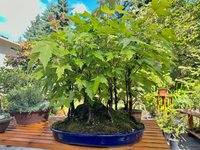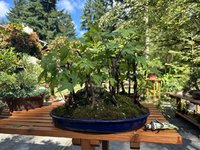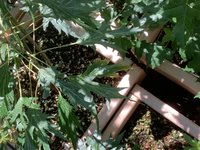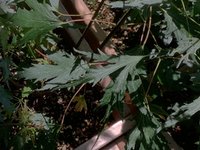Gabler
Masterpiece
Anyway, it seems Freeman's maples behave the same.
You are correct in the thread he does show . A first flush leaf that appears every bit full size . Compared to say a street tree . I thought he had achieved some reduction from bonsai culture for so long . But it appears not so32 year old Acer Rubrum
This tree has appeared in some other threads but I thought it deserving of it own. This was the first tree I ever collected (1987-1988) and it was out of my own woods. It was stumped a few inches above the ground line and then let grow for a season to recover as well as it could. The following...www.bonsainut.com
32 year old Acer Rubrum
This tree has appeared in some other threads but I thought it deserving of it own. This was the first tree I ever collected (1987-1988) and it was out of my own woods. It was stumped a few inches above the ground line and then let grow for a season to recover as well as it could. The following...www.bonsainut.com
32 year old Acer Rubrum
This tree has appeared in some other threads but I thought it deserving of it own. This was the first tree I ever collected (1987-1988) and it was out of my own woods. It was stumped a few inches above the ground line and then let grow for a season to recover as well as it could. The following...www.bonsainut.com


 .
.


I'll add that the Freemani seem more resistant to fungus where I live. My rubrums have been slowed down here and there by fungus over the past 3 years, but haven't had that issue with the hybrids.
Missouri fungi might be a bit different than Wisconsin fungi too!I had not noticed this! But that's what this thread is for!!
Group learning!
Missouri fungi might be a bit different than Wisconsin fungi too!


Hybridize… check this one from the same batch as the forest! Has consistently produced dissectum style leaves for the past 4 years running. We rootworked this one 3 years ago. Untamed, grows about 6’/ year.
Haven’t seen fungus ever and this guy grows sandwiched between vine maples that always get fungus in the fall.
View attachment 499260 View attachment 499261
cheers
DSD sends
...sorry this is so brief. I have been away from this platform for a while and have much to "catch up on".
I had been wondering what you were up to, but I figured it wasn't my business to ask.
Have two “Red Maples” in the yard that show a good deal of dimorphism between the seeds. Leaves present as red, I will look closer once they’re fully leafed out but here are both sets of seeds that are pretty well set at this point. Chance one is Freemani potentially?
